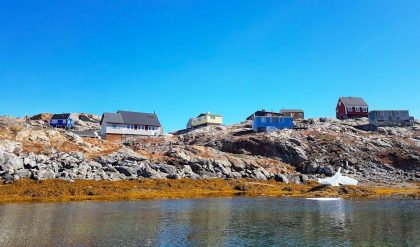Greenland, the world’s largest island, is a land of ice-covered landscapes, Arctic wildlife, and indigenous culture. However, one of the most common geographical questions about Greenland is: What continent is Greenland in?
While many assume that Greenland is part of Europe due to its political ties to Denmark, the island is actually geographically part of North America. The debate over Greenland’s continental classification is fueled by its unique geological foundation, cultural history, and political governance.
For a detailed breakdown of Greenland’s dual identity, check out this comprehensive article.
Greenland’s Geographical Placement: North America or Europe?
From a strictly geographical perspective, Greenland is located on the North American continent. It is situated northeast of Canada, separated by Baffin Bay and the Davis Strait.
Tectonic Plate Evidence: Greenland is North American
One of the strongest pieces of evidence that Greenland belongs to North America is its geological structure:
- Greenland is positioned on the North American tectonic plate.
- It is closer to Canada than to any European country.
- The landmass is physically connected to the North American continent through the Arctic region.
Since tectonic plates are a key factor in defining continental boundaries, Greenland is geographically part of North America.
For more on Greenland’s geographical classification, visit this detailed guide.
Greenland’s European Connection: A Political and Cultural Debate
Even though Greenland is geographically part of North America, it has been politically and culturally tied to Europe for over 1,000 years.
Historical European Influence
- Greenland was first settled by Norse Vikings in 986 AD, led by Erik the Red, who established farming communities in southern Greenland.
- In 1721, Denmark officially claimed Greenland, integrating it into the Danish Realm.
- Greenland was governed as a Danish colony until 1953, when it became an official part of the Kingdom of Denmark.
- Today, Greenland is an autonomous territory within Denmark, meaning it governs its own domestic affairs but relies on Denmark for foreign policy and defense.
Cultural Ties to Europe
- Danish is widely spoken in Greenland, alongside Greenlandic (Kalaallisut).
- Many Greenlanders have dual citizenship with Denmark.
- Greenland’s economy is heavily reliant on Danish financial support.
Despite these European connections, Greenland maintains strong cultural ties to the indigenous Inuit communities found in Canada and Alaska, reinforcing its North American identity.
Greenland’s Unique Dual Identity
Greenland’s continental classification is unique because it sits at the intersection of two worlds:
- Geologically, it belongs to North America.
- Politically, it has deep European ties.
This makes Greenland one of the few places in the world that can be claimed by two continents for different reasons.
Why Do People Think Greenland is in Europe?
The main reason people assume Greenland is part of Europe is due to its connection to Denmark. For over 300 years, Greenland has been governed under European rule, leading many to mistakenly categorize it as European.
However, from a scientific and geographical standpoint, Greenland is firmly North American.
Frequently Asked Questions About Greenland’s Continent
Q: Is Greenland Part of North America?
Yes. Greenland is geographically part of North America because it sits on the North American tectonic plate and is closer to Canada than to Europe.
Q: Why Is Greenland Politically Connected to Europe?
Greenland was colonized by Denmark in 1721 and remains an autonomous Danish territory.
Q: Could Greenland Become Independent?
Yes. Greenland has a strong independence movement, and many Greenlanders support full sovereignty. However, Greenland is economically dependent on Denmark, making independence a long-term goal.
Final Thoughts: What Continent is Greenland in?
So, what continent is Greenland in? The answer is North America, but its European ties complicate the classification.
- Geologically, Greenland is 100% North American.
- Politically and historically, Greenland has been ruled by Denmark for over 300 years.
- Culturally, Greenland is a mix of Indigenous Arctic heritage and Scandinavian influence.
Greenland remains a unique landmass that straddles two worlds—a North American island with European governance.
For a deeper look into Greenland’s complex classification, check out this in-depth article.





